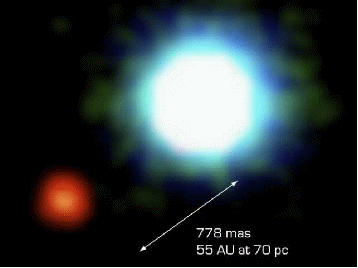Several hundred planets orbiting stars have now been discovered. At the moment there are two main techniques:
As a planet passes is fron of a star, a small percentage of the stars light is blocked, so the star appears to dim slightly. This happens every time the planet passes in front of a star so we can spot the presence of a planet by looking for small periodic variations in brightness.
Planets orbit stars because they are attracted by the force of the stars gravity, but the planet also attracts the star. Because the star is so much more massive than the planet, it will move only a small amount as the planet orbits the star. The star will 'wobble' from side to side and forwards and backwards.
Most of the planets are very large, gas planets, often orbiting very close to the star and far too hot to support life. They must be large to have a measurable effect on the star they orbit, but techniques are getting better. Rocky planets have been discovered and planets in the temperate zone around a star, where the temperature is such that liquid water can form.
Planets can now be imaged. This first picture of an star and extrasolar planet, 2M1207, is shown below.

and we can often deduce the composition of a planets atmosphere.
Alternatively, we can analyse the radio signals from distant solar systems for any evidence of intelligence. The SETI project began in 1992, and analyses signals from space. The project is run by NASA, but people can help by downloading software from <a target="_blank" href="http://boinc.berkeley.edu/" >BOINC . The software runs on home computers during the time when the computer would otherwise be idle.
So far no evidence of extra terrestrial intelligence has been found.
